Top Ten Beautiful Places To Travel In India
1. Ladakh, Jammu & Kashmir
A Journey Through the Land of High Passes
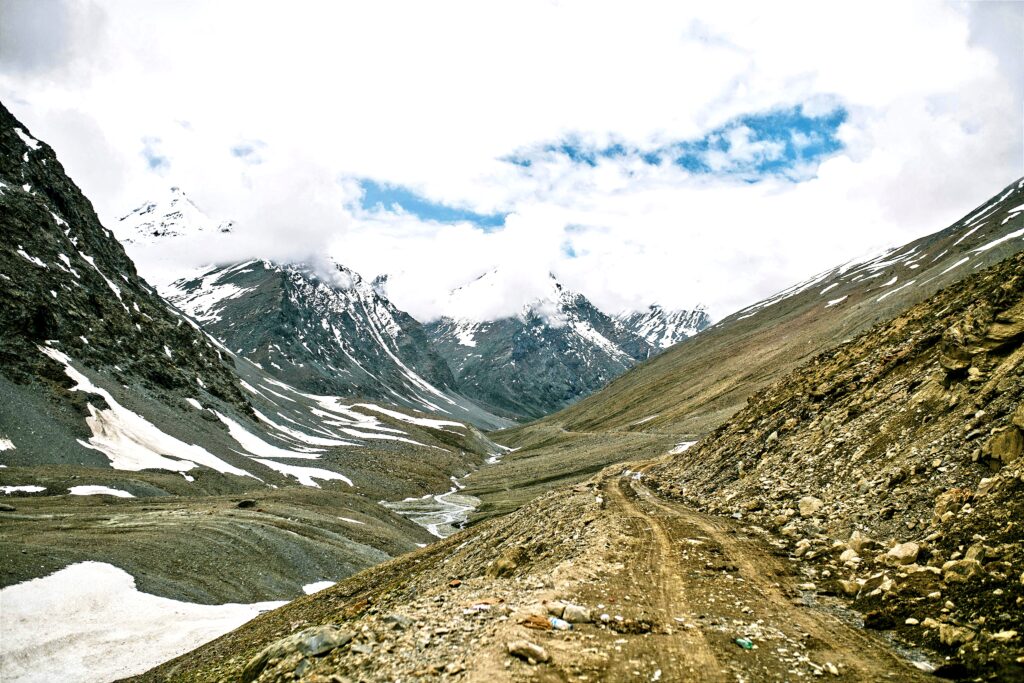
Ladakh, situated in the northernmost part of India, is a region of unparalleled beauty and stark landscapes. Often referred to as the “Land of High Passes,” Ladakh is a destination that captivates travelers with its rugged terrain, ancient monasteries, and serene lakes. The journey to Ladakh, whether by road through the winding mountain passes or by air, is an adventure in itself, offering breathtaking views of the Himalayas.
Key Attractions:
- Pangong Tso: This high-altitude lake, located at 4,350 meters, is famous for its crystal-clear blue waters that change color with the sunlight. A portion of the lake extends into Tibet, and it’s a must-visit for its serene beauty.
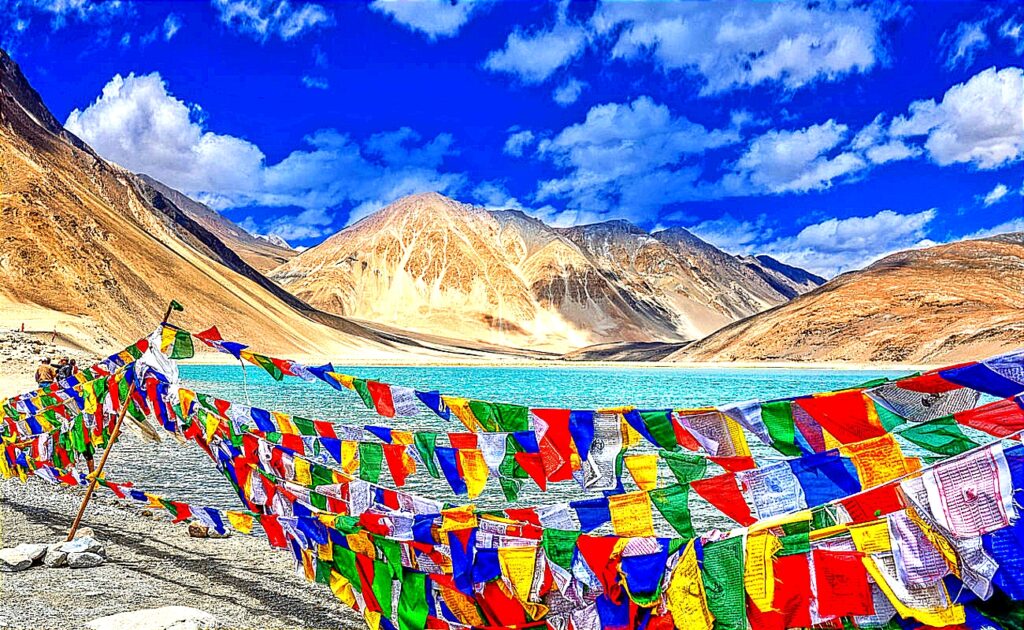
- Nubra Valley: Known for its sand dunes, Bactrian camels, and the stunning Diskit Monastery, Nubra Valley is a unique blend of desert and oasis in the mountains.
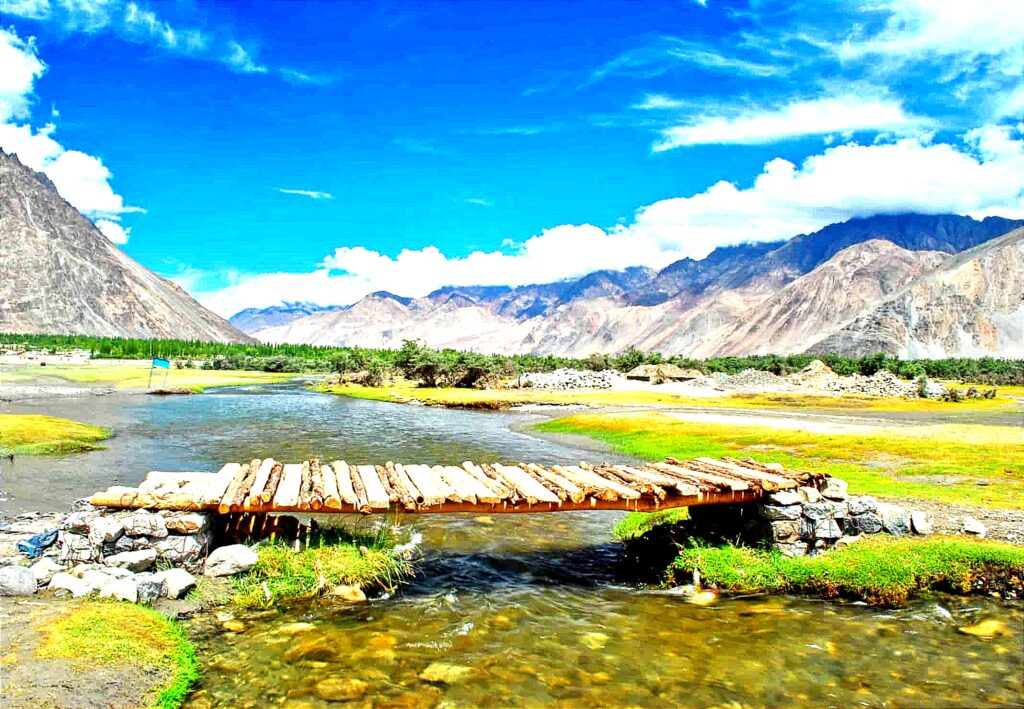
- Leh: The capital of Ladakh, Leh, is a charming town with a mix of Tibetan and Indian culture. The Leh Palace, Shanti Stupa, and the bustling bazaars offer a glimpse into the region’s rich history.
- Monasteries: Ladakh is home to several ancient monasteries, such as Hemis, Thiksey, and Alchi, each offering a serene retreat with stunning views of the surrounding landscapes.
Experiences:
- Trekking: Ladakh is a trekker’s paradise, with trails like the Markha Valley Trek, Stok Kangri, and Chadar Trek offering both challenge and beauty.
- Biking: The roads to Ladakh, especially the Manali-Leh Highway and the Srinagar-Leh Highway, are popular among bikers for the thrilling experience they offer.
Ladakh’s remote location, stark beauty, and unique culture make it a destination that offers not just a vacation, but a journey of discovery.
2. Shimla, Himachal Pradesh
Colonial Charm in the Heart of the Himalayas
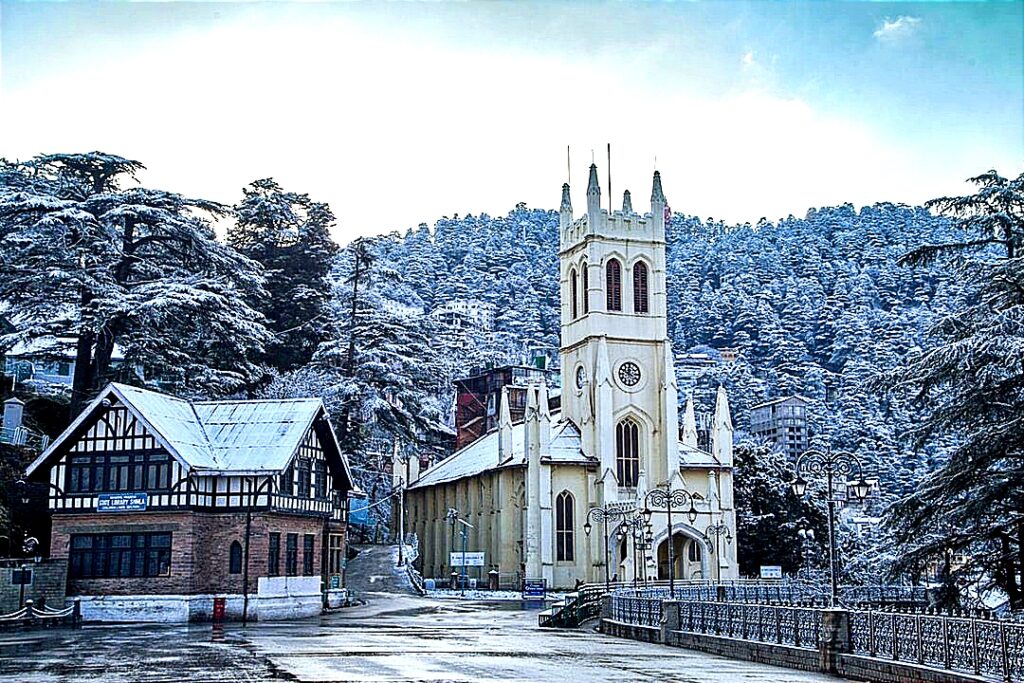
Shimla, the capital of Himachal Pradesh, is one of India’s most famous hill stations. Established by the British in the 19th century, Shimla served as the summer capital of India during colonial times. Today, Shimla retains much of its colonial charm, with its grand buildings, churches, and pedestrian-friendly Mall Road.
Key Attractions:
- The Ridge and Mall Road: The Ridge is the hub of Shimla, offering panoramic views of the surrounding mountains. The Mall Road, lined with shops, cafes, and colonial-era buildings, is the heart of the town’s social life.
- Viceregal Lodge: Now known as the Indian Institute of Advanced Study, this grand building was once the residence of the British Viceroy of India. The architecture and well-maintained gardens offer a glimpse into the colonial past.
- Jakhoo Temple: Perched on Jakhoo Hill, the highest point in Shimla, this temple is dedicated to Lord Hanuman. The hill offers stunning views of the town and the surrounding mountains.
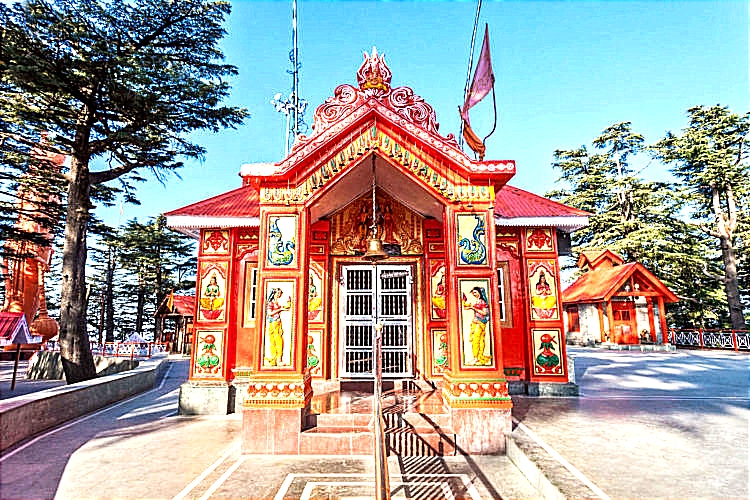
- Kalka-Shimla Railway: This UNESCO World Heritage Site is famous for its scenic train ride that winds through 102 tunnels and over 864 bridges, offering spectacular views of the Himalayas.
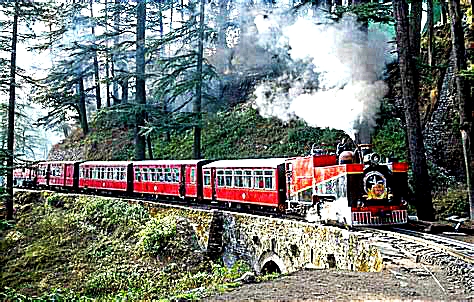
Experiences:
- Nature Walks: Shimla’s surrounding forests offer several trails for nature walks and short treks, such as those to Annandale, Summer Hill, and Chadwick Falls.
- Winter Sports: In winter, Shimla and nearby Kufri turn into a snowy wonderland, offering skiing, ice skating, and other winter sports.
Shimla’s blend of colonial charm, natural beauty, and vibrant local culture makes it an ideal destination for those looking to relax and explore.
3.Rishikesh, Uttarakhand
Spiritual Awakening on the Banks of the Ganges
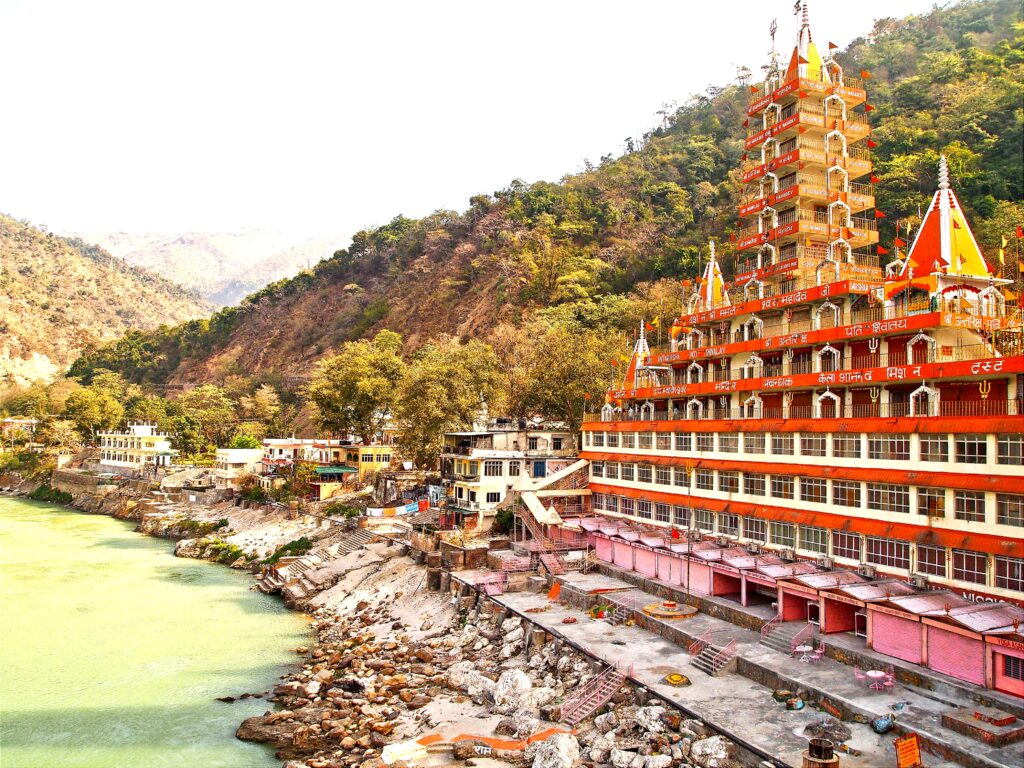
Rishikesh, nestled in the foothills of the Himalayas along the banks of the holy Ganges River, is a town that has long been associated with spirituality and yoga. Known as the “Yoga Capital of the World,” Rishikesh attracts visitors from around the globe who come to meditate, practice yoga, and immerse themselves in the town’s serene and spiritual atmosphere.
Key Attractions:
- Lakshman Jhula and Ram Jhula: These iconic suspension bridges offer stunning views of the Ganges and the surrounding hills. They are also symbolic of Rishikesh’s spiritual significance.
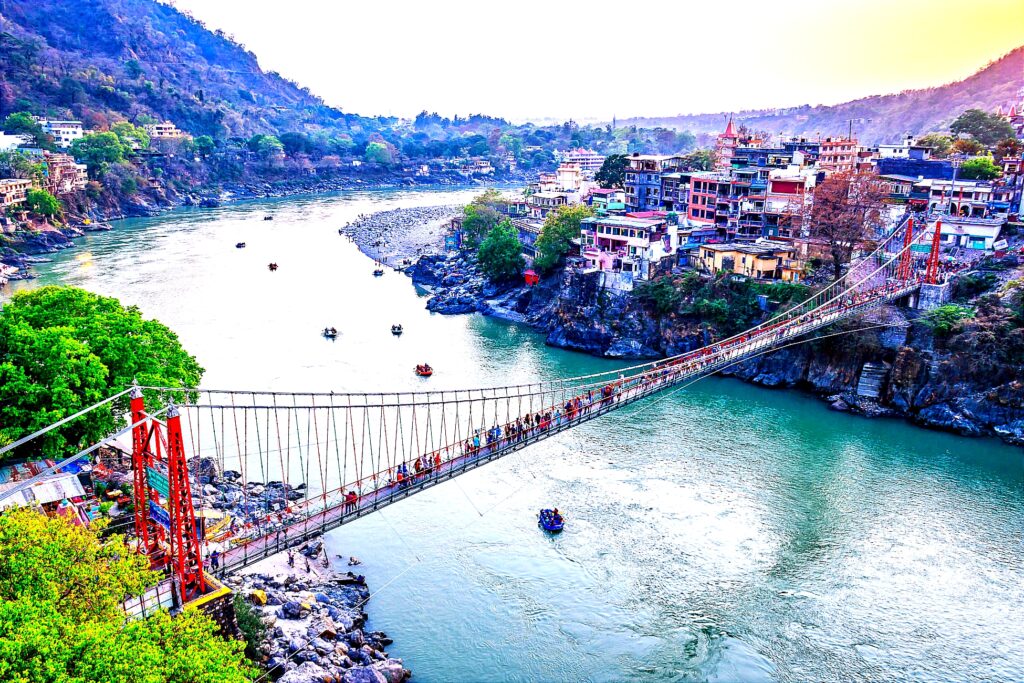
- Parmarth Niketan Ashram: One of the largest ashrams in Rishikesh, Parmarth Niketan is renowned for its yoga programs and the daily Ganga Aarti, a spiritual ritual held at sunset.
- Triveni Ghat: This is one of the most revered bathing ghats in Rishikesh, where pilgrims come to take a dip in the holy river. The evening Aarti here is a mesmerizing experience, with chants, lights, and the serene flow of the Ganges.
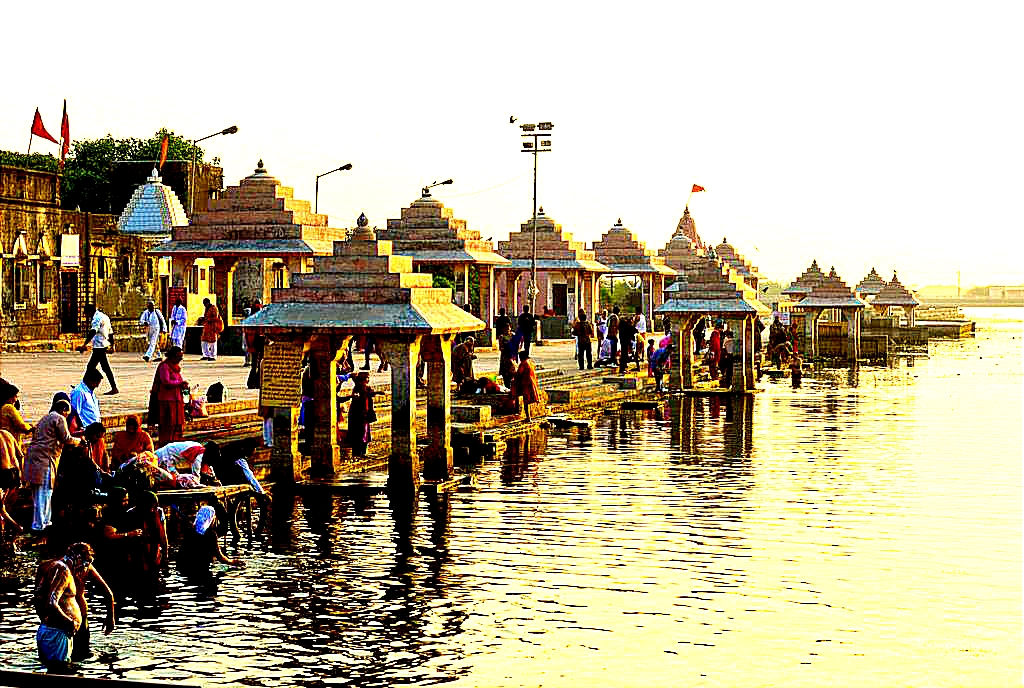
- Beatles Ashram (Chaurasi Kutia): This ashram gained fame after the Beatles visited in the 1960s. It’s now a spiritual retreat with graffiti art that reflects the influence of the Beatles on Rishikesh.
Experiences:
- Yoga and Meditation: Rishikesh is home to numerous ashrams and yoga centers offering classes and retreats that cater to all levels, from beginners to advanced practitioners.
- Adventure Sports: Apart from its spiritual side, Rishikesh is also a hub for adventure activities. White-water rafting on the Ganges, bungee jumping, and trekking in the surrounding hills are popular among thrill-seekers.
Rishikesh’s unique combination of spirituality, natural beauty, and adventure makes it a destination that offers both peace and excitement.
4. Kerala Backwaters
Serenity and Beauty in God’s Own Country
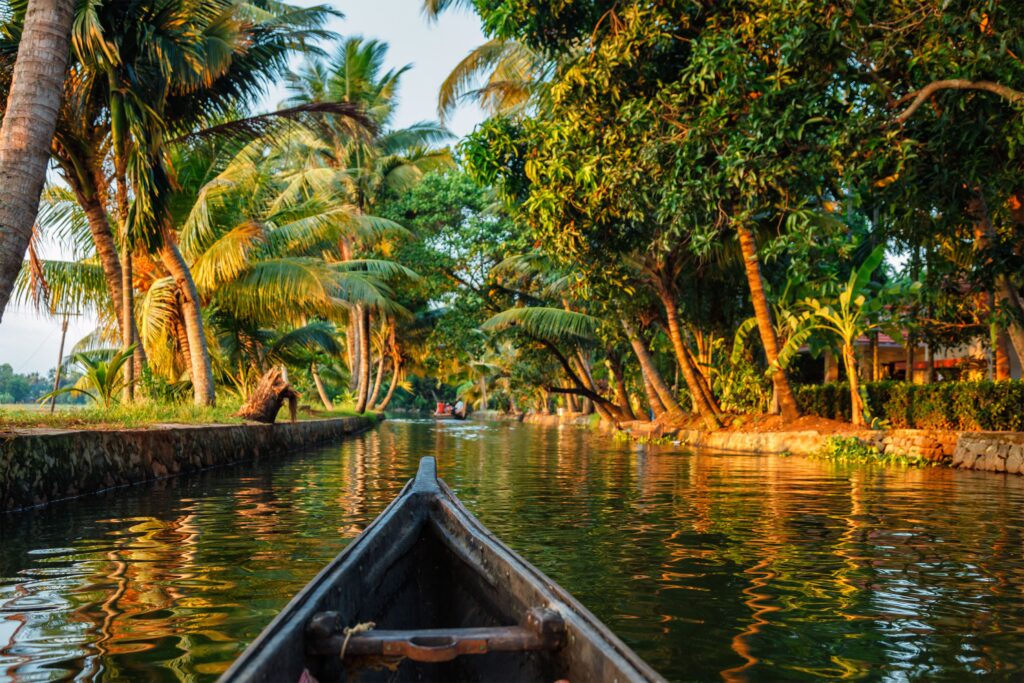
The Kerala Backwaters are a network of interconnected canals, rivers, lakes, and lagoons that run parallel to the Arabian Sea coast in the southern state of Kerala. This unique ecosystem is a haven of tranquility, offering a peaceful retreat amidst lush greenery, traditional villages, and a rich variety of wildlife.
Key Attractions:
- Alleppey (Alappuzha): Known as the “Venice of the East,” Alleppey is the most popular starting point for houseboat cruises through the backwaters. The town is famous for its picturesque canals, beaches, and paddy fields.
- Kumarakom: Located on the banks of Vembanad Lake, Kumarakom is a serene village known for its bird sanctuary and luxurious resorts. It’s a perfect destination for birdwatchers and nature lovers.
- Kollam: One of the oldest ports on the Malabar Coast, Kollam is the gateway to the southern backwaters. The Ashtamudi Lake, with its scenic beauty and tranquil surroundings, is a highlight of the region.
- Munroe Island: Located at the confluence of Ashtamudi Lake and the Kallada River, Munroe Island offers a glimpse into the traditional life of Kerala’s backwater villages. Canoe tours through the narrow canals are a popular activity.
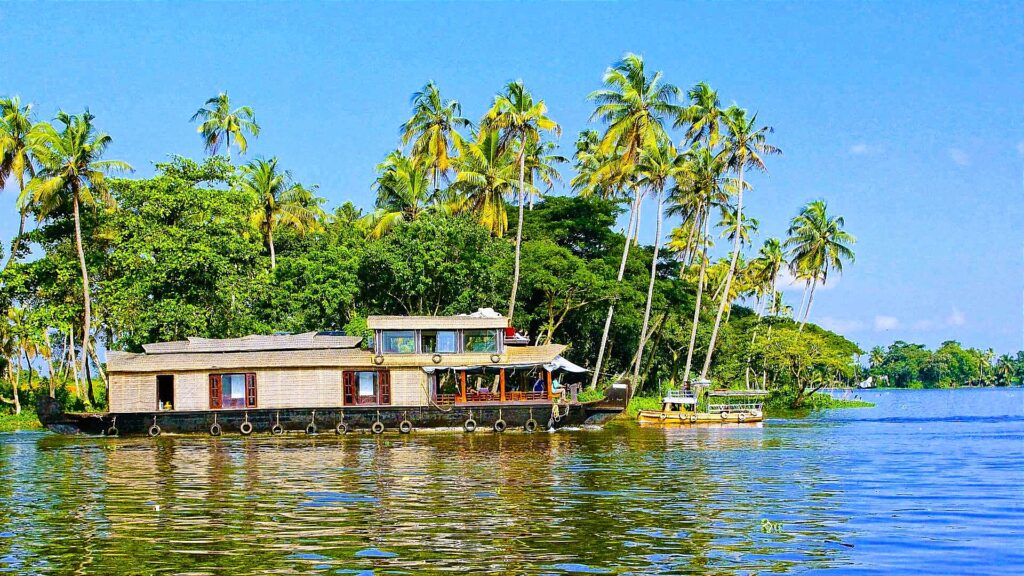
Experiences:
- Houseboat Cruises: A houseboat cruise is the quintessential way to experience the backwaters. These traditional Kettuvallams, now converted into luxurious floating homes, offer a leisurely journey through the serene waters, with views of palm-fringed shores, rice paddies, and local life.
- Village Tours: Exploring the backwater villages provides insight into the traditional Kerala way of life. Visitors can see coir-making, fishing, and toddy tapping, and interact with the friendly locals.
The Kerala Backwaters offer a unique blend of nature, culture, and relaxation, making it one of the most peaceful and picturesque destinations in India.
5. Udaipur, Rajasthan
The Venice of the East and the City of Lakes
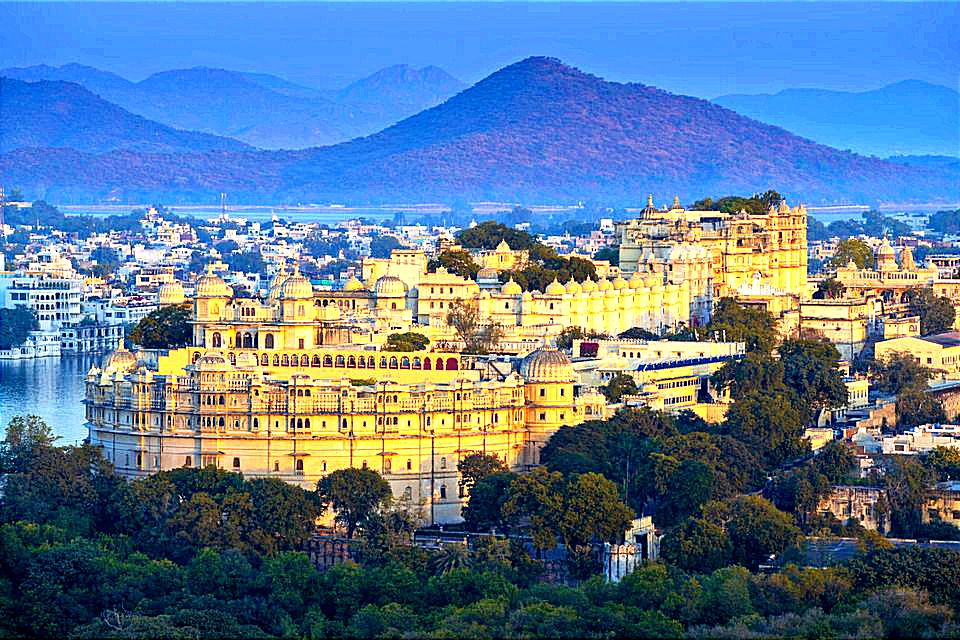
Udaipur, often referred to as the “Venice of the East,” is a city that epitomizes romance and royal grandeur. Situated in the state of Rajasthan, Udaipur is renowned for its artificial lakes, lavish palaces, and rich cultural heritage. The city’s picturesque setting against the backdrop of the Aravalli Hills makes it one of the most enchanting destinations in India.
Key Attractions:
- City Palace: Overlooking Lake Pichola, the City Palace is a sprawling complex of palaces, courtyards, and museums. The palace offers a panoramic view of the city and the lake, and its intricate architecture reflects the grandeur of the Rajput rulers.
- Lake Pichola: This man-made lake is the heart of Udaipur, surrounded by palaces, temples, and ghats. A boat ride on Lake Pichola offers stunning views of the Lake Palace, Jag Mandir, and the surrounding hills.
- Jag Mandir: Also known as the “Lake Garden Palace,” Jag Mandir is located on an island in Lake Pichola. The palace has a rich history and is known for its beautiful gardens and marble structures.
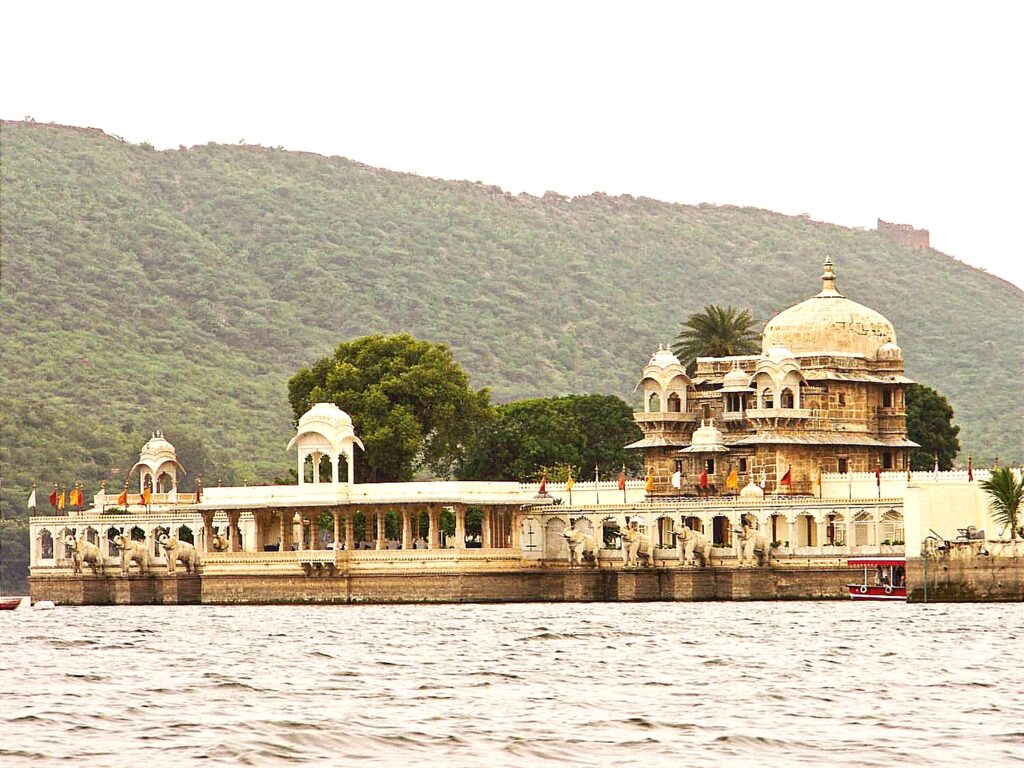
- Saheliyon Ki Bari: This “Garden of the Maidens” is a historic garden built for the royal ladies of Udaipur. It features lush lawns, marble pavilions, fountains, and lotus pools, offering a serene retreat in the city.
Experiences:
- Cultural Performances: Udaipur is known for its vibrant cultural scene. The Bagore Ki Haveli hosts daily performances of traditional Rajasthani dance and music, providing a vivid glimpse into the region’s rich artistic heritage. The Dharohar Dance Show, in particular, is a popular attraction that showcases folk dances, including the Ghoomar, Bhavai, and Puppet Show.
- Shopping in Udaipur: Udaipur’s bustling markets are a treasure trove of traditional Rajasthani handicrafts. You can shop for items like miniature paintings, silver jewelry, colorful textiles, and intricately carved wooden artifacts. Hathi Pol Bazaar and Bada Bazaar are among the most famous shopping areas.
- Dining with a View: Udaipur’s lakeside restaurants offer not just delicious Rajasthani cuisine but also stunning views of the city’s illuminated palaces and ghats. Dining at places like Ambrai Restaurant, overlooking Lake Pichola, provides a memorable culinary experience with a magical ambiance.
Udaipur’s blend of history, culture, and scenic beauty makes it one of the most romantic and captivating destinations in India. Whether you’re exploring the grandeur of its palaces, cruising on its lakes, or immersing yourself in its vibrant culture, Udaipur offers an experience that lingers long after your visit.
6. Goa
Sun, Sand, and Swaying Palms
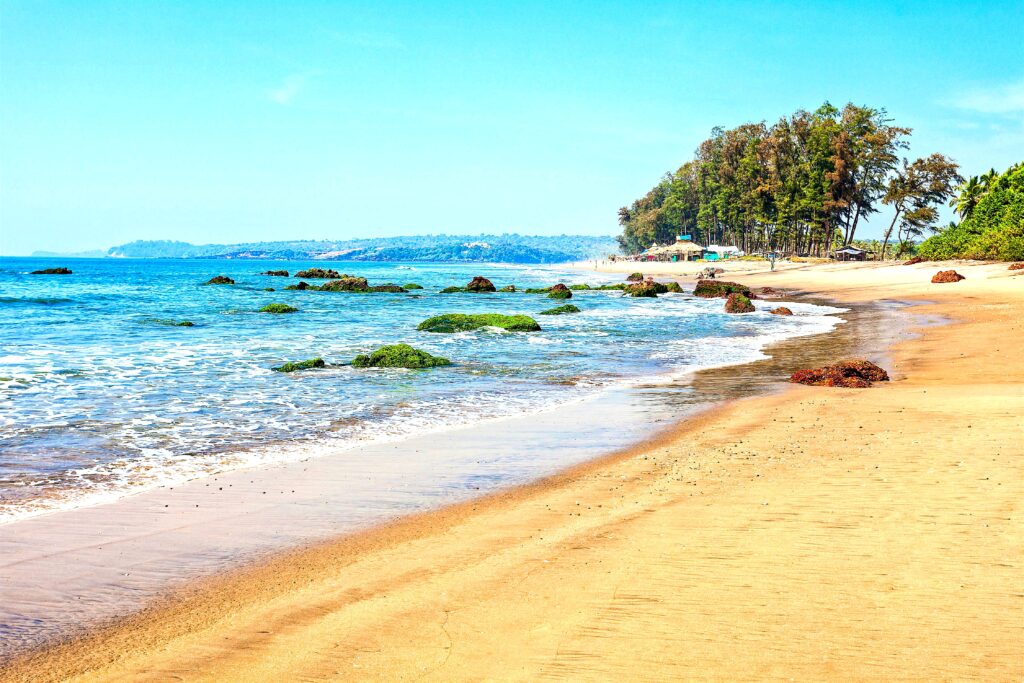
Goa, India’s smallest state, is synonymous with its golden beaches, laid-back vibe, and a unique blend of Indian and Portuguese cultures. This tropical paradise on the western coast of India is a favorite destination for both domestic and international travelers, offering something for everyone—from beach lovers and adventure seekers to history buffs and party enthusiasts.
Key Attractions:
- Beaches of Goa: Goa’s coastline is dotted with beautiful beaches, each with its own distinct character. Anjuna and Vagator are known for their vibrant flea markets and trance parties, Baga and Calangute for their bustling atmosphere and water sports, while Palolem and Agonda offer serene, laid-back environments ideal for relaxation.
- Old Goa: A UNESCO World Heritage Site, Old Goa was once the capital of Portuguese India. It’s home to magnificent churches and cathedrals, such as the Basilica of Bom Jesus, which houses the remains of St. Francis Xavier, and Se Cathedral, one of the largest churches in Asia.
- Dudhsagar Waterfalls: Located on the Goa-Karnataka border, Dudhsagar is one of India’s tallest waterfalls, cascading down from a height of over 300 meters. The trek to the falls through lush greenery and the opportunity to swim in the cool, refreshing waters make it a popular day trip from Goa.
- Fort Aguada: This 17th-century Portuguese fort, overlooking the Arabian Sea, is one of Goa’s most iconic landmarks. The fort offers panoramic views of the coastline and is a great spot to witness a Goan sunset.
Experiences:
- Water Sports: Goa is a hub for water sports, offering activities like parasailing, jet-skiing, windsurfing, and scuba diving. The clear waters around the Grand Island are particularly popular for snorkeling and diving.
- Nightlife: Goa is famous for its vibrant nightlife, with beach shacks, bars, and clubs that come alive after dark. Tito’s Lane in Baga and the beach parties in Anjuna are legendary, offering music, dance, and a lively atmosphere that goes on until the early hours.
- Goan Cuisine: Goan food is a delicious fusion of Indian and Portuguese influences, with seafood being a staple. Dishes like prawn balchão, fish curry rice, and bebinca (a traditional Goan dessert) are must-tries. Enjoying a meal at a beach shack with your toes in the sand is one of the quintessential Goan experiences.
Goa’s irresistible combination of natural beauty, vibrant culture, and easy-going lifestyle make it a destination that invites you to relax, explore, and enjoy life’s simple pleasures.
7. Varanasi, Uttar Pradesh
The Spiritual Heart of India
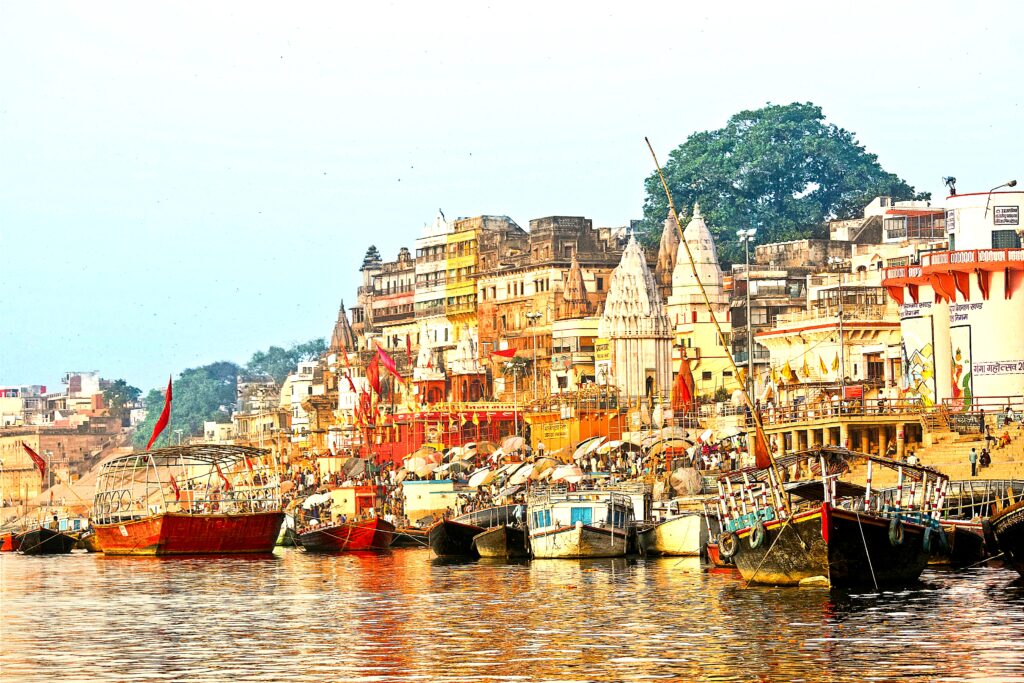
Varanasi, also known as Kashi or Benares, is one of the oldest living cities in the world and the spiritual heart of India. Situated on the banks of the Ganges River, Varanasi is a city where life and death coexist in a profound and spiritual manner. It is a place of pilgrimage for Hindus, who believe that dying in Varanasi and being cremated on the ghats along the Ganges allows the soul to attain moksha, or liberation from the cycle of rebirth.
Key Attractions:
- The Ghats of Varanasi: The ghats are the most iconic feature of Varanasi. These stone steps leading down to the river are the site of daily rituals, including prayers, bathing, and cremation ceremonies. The Dashashwamedh Ghat is the most famous, where the evening Ganga Aarti is performed with great fervor and devotion. The Manikarnika Ghat is the main cremation ghat, where funeral pyres burn day and night.
- Kashi Vishwanath Temple: Dedicated to Lord Shiva, the Kashi Vishwanath Temple is one of the most important Hindu temples in India. The temple’s golden spire is a major attraction, and it’s considered highly auspicious to offer prayers here.
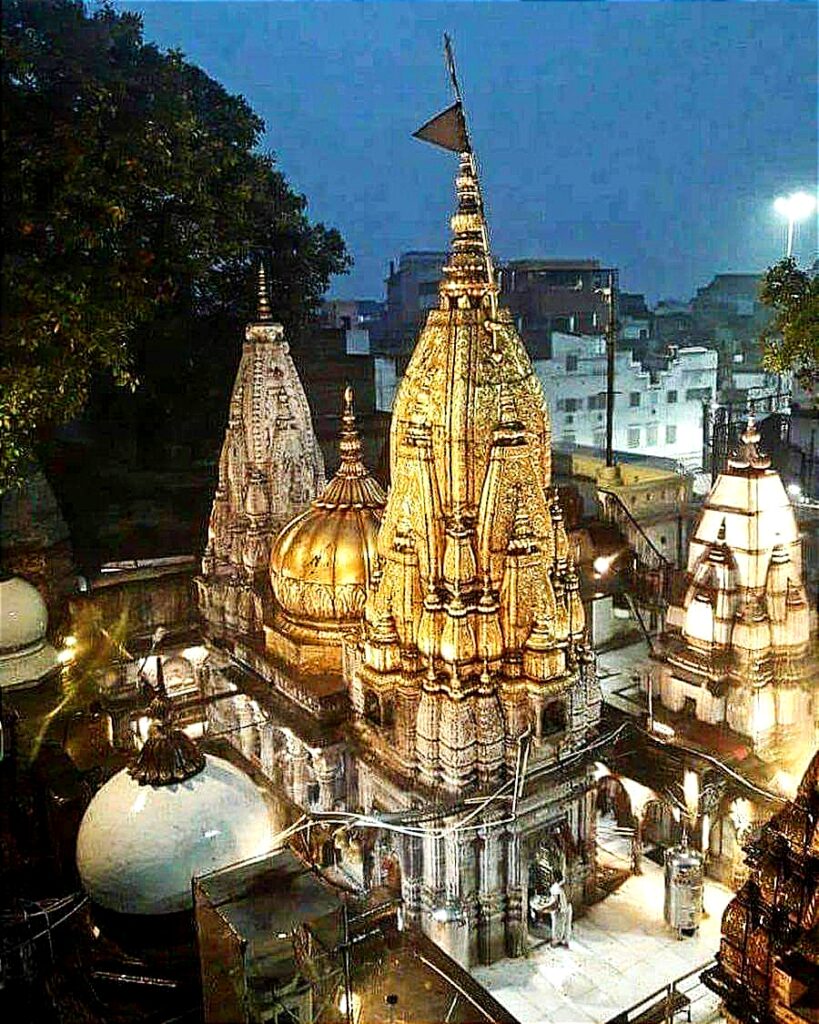
- Sarnath: Located just a few kilometers from Varanasi, Sarnath is one of the four main Buddhist pilgrimage sites in India. It is where Gautama Buddha gave his first sermon after attaining enlightenment. The Dhamek Stupa and the ruins of ancient monasteries are key highlights.
- Ramnagar Fort: Situated on the opposite bank of the Ganges, Ramnagar Fort is a crumbling yet majestic fortification that was once the residence of the Maharaja of Varanasi. The fort houses a museum displaying vintage cars, medieval costumes, and historical artifacts.
Experiences:
- Boat Ride on the Ganges: A boat ride at dawn on the Ganges offers a unique perspective of Varanasi. As the sun rises, the ghats come alive with pilgrims performing their morning rituals, and the golden light reflects off the river, creating a surreal and spiritual atmosphere.
- Exploring the Old City: The narrow, winding lanes of Varanasi’s old city are a sensory overload, filled with the sights, sounds, and smells of traditional India. From bustling markets selling everything from silk saris to brassware, to hidden temples and street food stalls, the old city is a place to get lost in and discover the essence of Varanasi.
- Participating in the Ganga Aarti: The evening Ganga Aarti at Dashashwamedh Ghat is a must-experience ritual. The sight of priests performing synchronized rituals with fire, accompanied by chants and the sound of bells, is both mesmerizing and deeply spiritual.
Varanasi is not just a destination; it’s an experience that touches the soul. It’s a place where the spiritual and the everyday intersect, offering a glimpse into the deep-rooted traditions and beliefs that have shaped Indian culture for millennia.
8. Munnar, Kerala
A Verdant Escape into the Western Ghats
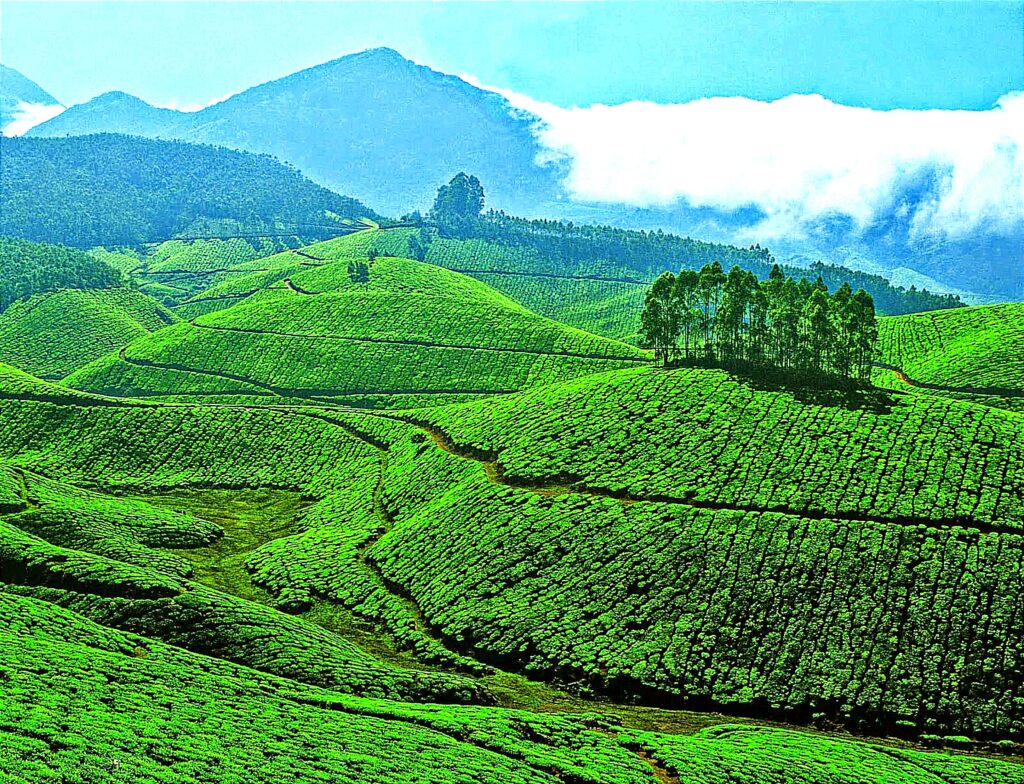
Munnar, located in the Western Ghats of Kerala, is one of South India’s most picturesque hill stations. Known for its expansive tea plantations, mist-covered hills, and cool climate, Munnar is a haven for nature lovers and a popular retreat from the tropical heat of the plains. The town is surrounded by rolling hills covered with tea gardens, making it a perfect destination for those seeking peace and natural beauty.
Key Attractions:
- Tea Gardens: Munnar is synonymous with tea, and a visit to the tea gardens is a must. The sprawling plantations, with neatly trimmed bushes arranged in a patchwork pattern across the hills, are a sight to behold. The Tata Tea Museum offers insights into the history of tea cultivation in the region and the process of tea production.
- Eravikulam National Park: Home to the endangered Nilgiri Tahr, Eravikulam National Park is a biodiversity hotspot. The park is also famous for the blooming of the Neelakurinji flowers, which turn the hillsides blue once every twelve years. The park offers excellent trekking opportunities, with breathtaking views of the Anamudi Peak, the highest point in South India.
- Mattupetty Dam: Located a short drive from Munnar, the Mattupetty Dam is a popular spot for picnics and boating. The dam’s reservoir is surrounded by lush hills and tea plantations, making it a picturesque location for photography and leisurely strolls.
- Top Station: Situated at a height of about 1,700 meters, Top Station offers panoramic views of the Western Ghats and the valleys below. It is the highest point in Munnar and is known for its cool, refreshing air and stunning sunrise and sunset views.
Experiences:
- Trekking: Munnar is a trekker’s delight, with several trails winding through its hills and forests. The trek to Meesapulimala, the second-highest peak in the Western Ghats, is particularly popular among adventure enthusiasts.
- Tea Tasting: Munnar’s tea estates offer guided tours that include tea tasting sessions. You can sample different varieties of tea, from the delicate white tea to the robust black tea, and learn about the art of tea blending.
- Stay in a Plantation Bungalow: For a truly immersive experience, stay in one of the colonial-era plantation bungalows that dot the Munnar hills. These bungalows, often surrounded by tea gardens and forests, offer a blend of old-world charm and modern comforts.
Munnar’s serene landscapes, cool climate, and lush greenery make it a perfect destination for a relaxing holiday in nature’s lap. Whether you’re exploring the tea estates, trekking through the hills, or simply enjoying the tranquility, Munnar offers a refreshing break from the everyday hustle.
9. Jaipur, Rajasthan
The Pink City of Royal Splendor
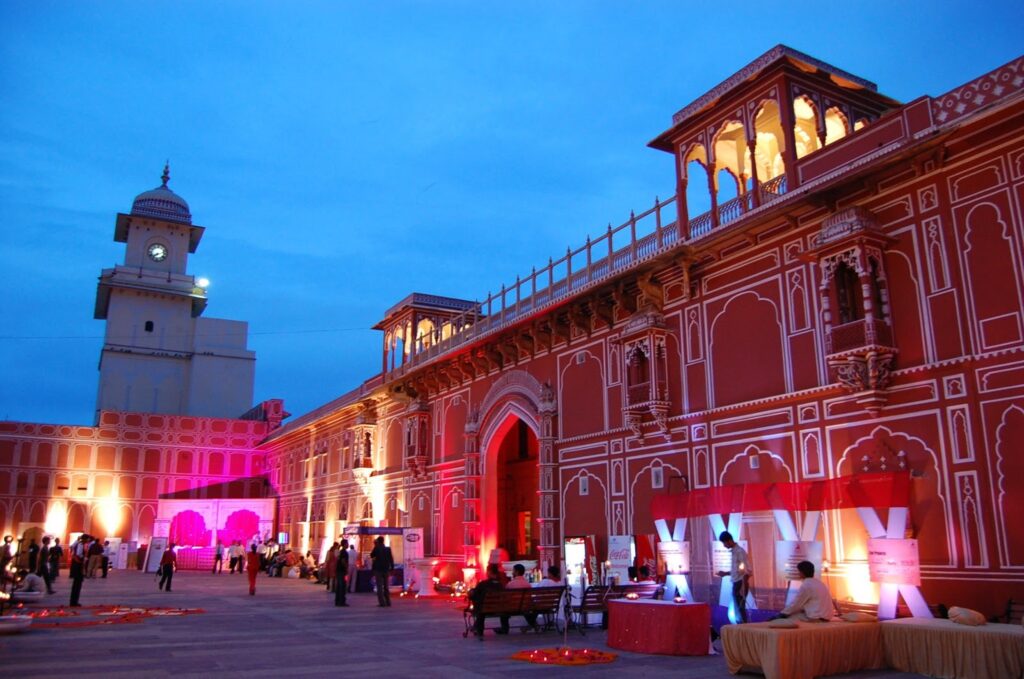
Jaipur, the capital of Rajasthan, is a city that seamlessly blends ancient history with modernity. Known as the “Pink City” due to the distinctive color of its buildings, Jaipur is a vibrant city that offers a rich cultural experience. From magnificent palaces and forts to bustling bazaars and vibrant festivals, Jaipur is a city that dazzles with its royal heritage and colorful traditions.
Key Attractions:
- Amber Fort: Perched on a hill overlooking Maota Lake, Amber Fort is one of Jaipur’s most iconic landmarks. This 16th-century fort is a stunning example of Rajput architecture, with its grand courtyards, intricate carvings, and mirror work. The fort offers panoramic views of the surrounding landscape, and the sound and light show in the evening brings its history to life.
- City Palace: Located in the heart of Jaipur, the City Palace is a sprawling complex that houses museums, courtyards, and royal residences. The palace’s architecture is a blend of Rajasthani and Mughal styles, and it provides a fascinating glimpse into the lifestyle of Jaipur’s royal family.
- Hawa Mahal: Also known as the Palace of Winds, Hawa Mahal is one of Jaipur’s most recognizable landmarks. This five-story structure, built in 1799, features a facade with 953 small windows, or jharokhas, designed to allow royal ladies to observe street festivals and daily life without being seen. The honeycomb-like structure of the Hawa Mahal is a brilliant example of Rajput architecture and is particularly stunning when illuminated at night.
- Jantar Mantar: A UNESCO World Heritage Site, Jantar Mantar is an astronomical observatory built by Maharaja Sawai Jai Singh II in the 18th century. It houses a collection of 19 architectural astronomical instruments, including the world’s largest stone sundial. These instruments were used to measure time, track celestial bodies, and predict eclipses, showcasing the scientific prowess of ancient India.
- Nahargarh Fort: Overlooking the city from the edge of the Aravalli Hills, Nahargarh Fort offers breathtaking views of Jaipur, especially at sunset. The fort was originally built as a retreat for the royal family and features beautiful frescoes and ornate interiors. The fort’s rooftop restaurant is a popular spot for enjoying a meal with a panoramic view of the city below.
- Albert Hall Museum: The oldest museum in Rajasthan, the Albert Hall Museum is a grand building located in Ram Niwas Garden. The museum houses an extensive collection of artifacts, including paintings, jewelry, textiles, and sculptures, showcasing Rajasthan’s rich cultural heritage.
Experiences:
- Shopping in Jaipur: Jaipur is a shopper’s paradise, known for its traditional crafts, jewelry, and textiles. The bustling markets of Johari Bazaar, Bapu Bazaar, and Tripolia Bazaar are filled with colorful saris, handcrafted jewelry, blue pottery, and other traditional Rajasthani items. Jaipur is also famous for its gemstones and Kundan jewelry, making it a great place to buy unique and precious souvenirs.
- Rajasthani Cuisine: A visit to Jaipur is incomplete without indulging in its rich and flavorful cuisine. Rajasthani dishes like dal baati churma, gatte ki sabzi, laal maas (spicy mutton curry), and ghevar (a traditional sweet) are a must-try. Many restaurants offer traditional Rajasthani thalis, providing a variety of local delicacies in one meal.
- Hot Air Balloon Ride: For a unique perspective of the Pink City, consider taking a hot air balloon ride. Floating above the forts, palaces, and rugged hills, you’ll get a bird’s-eye view of Jaipur’s stunning landscape. The experience is particularly magical during sunrise or sunset.
- Attending a Traditional Festival: Jaipur is known for its vibrant festivals, and participating in one can be a highlight of your visit. The Jaipur Literature Festival, held annually in January, attracts writers and thinkers from around the world. The Teej Festival, celebrated in July or August, is marked by processions, traditional dances, and the swinging of decorated swings. Diwali, the Festival of Lights, is also celebrated with great enthusiasm, with the entire city lit up in a dazzling display of lights and fireworks.
Jaipur, with its royal palaces, historic forts, and vibrant culture, offers a rich and immersive experience for travelers. Whether you’re exploring its architectural marvels, shopping for traditional crafts, or enjoying its cuisine, Jaipur captures the essence of Rajasthan’s regal and colorful heritage.
10. Khajuraho, Madhya Pradesh
A Temple Town of Artistic Excellence
Khajuraho, a small town in Madhya Pradesh, is famous for its group of exquisitely carved temples, which are UNESCO World Heritage Sites. Built between 950 and 1050 AD by the Chandela dynasty, the temples of Khajuraho are renowned for their intricate sculptures that depict various aspects of life, including spirituality, love, and art. The temples are divided into three groups: Western, Eastern, and Southern, with the Western group being the most famous and visited.
Key Attractions:
- Western Group of Temples: The Western group of temples is the most significant and well-preserved section of the Khajuraho complex. The Kandariya Mahadeva Temple, dedicated to Lord Shiva, is the largest and most ornate temple in this group. Its spire rises to 31 meters, and the temple is adorned with over 800 statues, each exquisitely detailed. The Lakshmana Temple, dedicated to Lord Vishnu, and the Vishvanatha Temple are other notable temples in this group.
- Eastern Group of Temples: The Eastern group of temples is primarily dedicated to Jain Tirthankaras and includes the Parsvanath Temple, the largest Jain temple in Khajuraho. The temples in this group are simpler in design compared to the Western group but still feature intricate carvings and a serene atmosphere.
- Southern Group of Temples: The Southern group is smaller and less visited but includes some interesting temples like the Duladeo Temple, dedicated to Shiva, and the Chaturbhuj Temple, which houses a magnificent 9-foot tall statue of Vishnu.
Experiences:
- Sound and Light Show: The Khajuraho Sound and Light Show, held every evening in the Western group of temples, narrates the history of the Chandela dynasty and the construction of the temples. The show is presented in both English and Hindi and is a great way to learn about the historical and cultural significance of the Khajuraho temples.
- Exploring the Temples: A guided tour of the Khajuraho temples offers deeper insights into the symbolism and artistry of the sculptures. The carvings depict a wide range of themes, from mythology and spirituality to everyday life and the celebration of love, making the temples a testament to the artistic achievements of ancient India.
- Khajuraho Dance Festival: If you visit Khajuraho in February, you can attend the Khajuraho Dance Festival, a week-long celebration of classical Indian dance forms. Set against the backdrop of the illuminated temples, the festival features performances by some of India’s best dancers in styles like Kathak, Bharatanatyam, Odissi, and Kuchipudi.
Khajuraho is a place where art, history, and spirituality converge. The temples, with their stunning architecture and detailed sculptures, offer a glimpse into the rich cultural heritage of India’s past, making Khajuraho a must-visit destination for art and history enthusiasts.
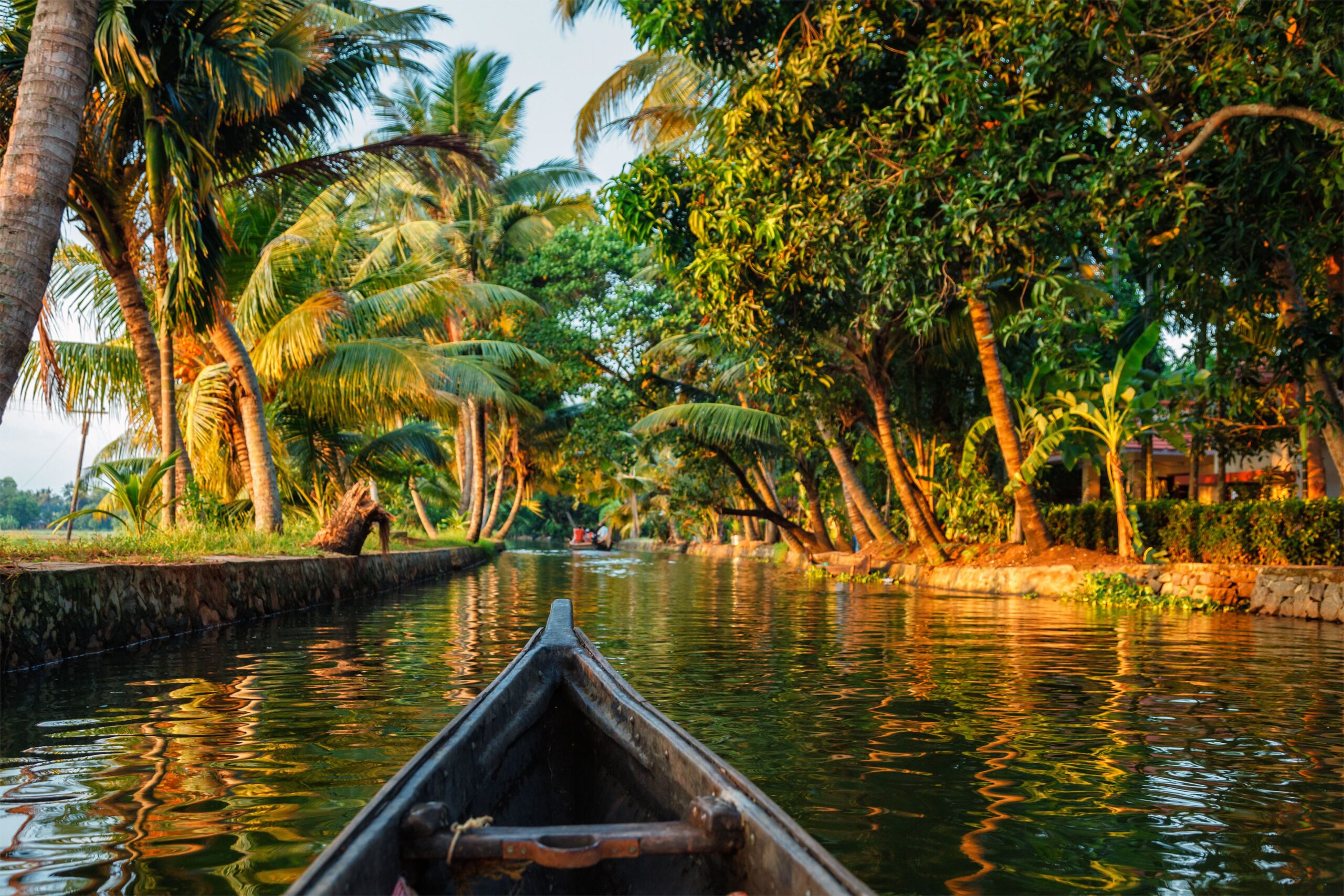






Post Comment